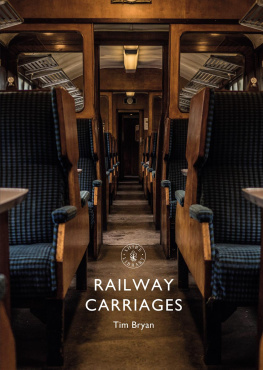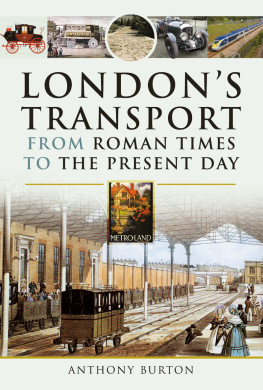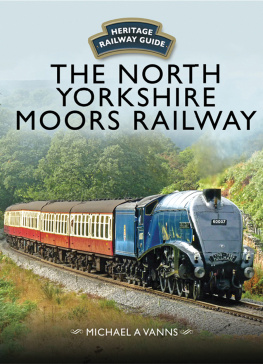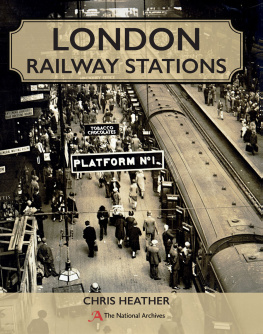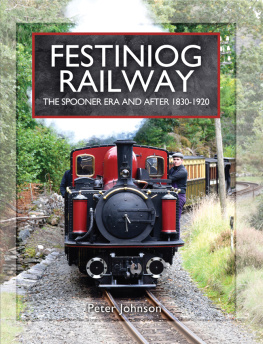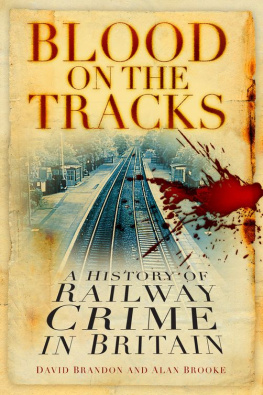CONTENTS
- Cover
- Title Page
- Table of Contents
INTRODUCTION
T HERE IS LITTLE doubt that the railway carriage has been of rather less interest to railway enthusiasts and historians over the years than the steam locomotive and its diesel and elect ric successors.
Cuthbert Hamilton Ellis, whose standard work published more than sixty years ago remains an affectionate and at times almost poetic celebration of the humble carriage, noted that the study of its development was a fascinating subject, full of human, as well as technical, interest. So often seen as the poor relation of the locomotive, the development of the railway carriage mirrors the social and economic history of Britain from the 1830s to the present and it is hoped that this book might help redress just a little of the historical balance in favour o f the carriage.
The story of carriage development is one of evolution, increasing sophistication and the application of new technology and materials. The earliest passenger vehicles owed much to the mode of transport they were to supplant, the horse-drawn carriage, and in the course of the nineteenth century their design incorporated all manner of features both in terms of their construction and also the range of innovations they included to improve the comfort of the passengers they carried. As a result, features such as heating, lighting, lavatories and restaurant facilities all beca me commonplace.
While millions of passengers travelled (and still travel) in what might be termed workaday standard carriages, it is the more specialised and often luxury rolling stock that has attracted the most attention and it is fitting that this book will highlight some of those special vehicles that have graced the British railway network. In this category are included royal carriages, luxury vehicles such as those built by the Pullman Company and more specialised coach designs such as dining cars and sleeper carriages. Railways initially bought carriages from coachbuilding companies and rolling stock suppliers but eventually built their own workshops to construct rolling stock. The situation today has turned full circle, and with the closure of BR workshops in more recent times, railway operators lease rolling stock built by private manufacturers.
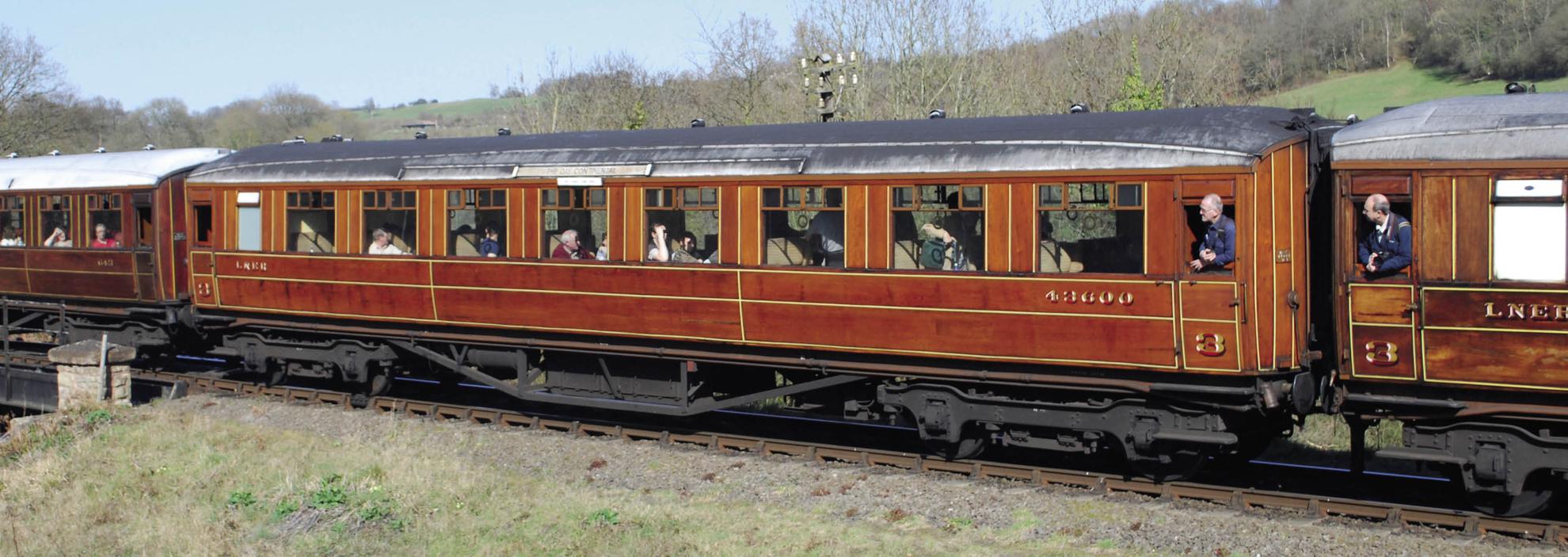
A 1934 LNER 61ft 6in open third carriage seen at Highley on the Severn Valley Railway in 2012. These beautiful varnished teak livery carriages were the most numerous of those designed by Sir Nigel Gresley.
This book also concentrates on railway carriage development on Britains mainline railways from the 1830s to the present; space prevents the inclusion of stock used on urban transport networks and narrow gauge railways. There is also no doubt that carriage design and development can be a technical subject; while the book has a social history emphasis, a short glossary has been included to explain some of the technology. The reader will also note that the word carriage and coach are used interchangeably, as they have been in writing about the subject for many years.
There is not room in a slim volume like this to do anything but attempt the most basic survey of what is a complex and evolving story; todays railway carriages are a world away from those travelled in by the Victorian passenger; levels of comfort are generally much higher, trains are faster, but the compartments and traditional materials and design familiar to travellers are long gone. Modern trains are clean, bright and mainly rapid, with features like Wi-Fi connectivity reflecting the changing times; some readers looking at some of the evocative images of carriages reproduced here might, however, reflect that in the age of steam passengers travelling by train could do so in some style on the best expresses!
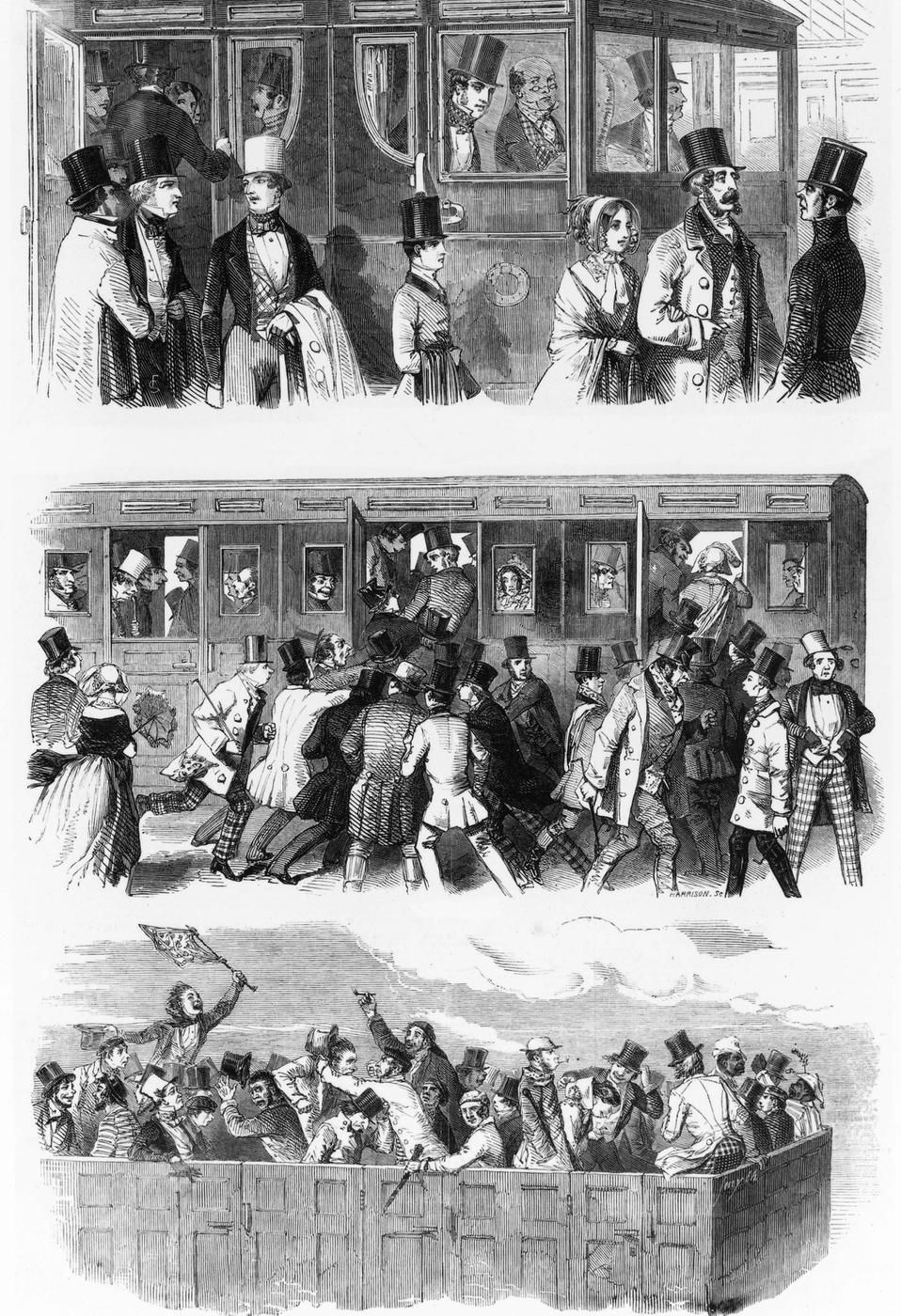
An engraving from the Illustrated London News of 1846 showing the class distinctions of rail travel and the differing accommodation for each class.
HISTORICAL SURVEY
A S THE EARLIEST British railways were intended for the transportation of coal, minerals and other goods, very little attention was initially paid by engineers to the design of rolling stock to carry passengers. Accommodation on what is widely held to be the first public railway, the Stockton and Darlington, was primitive. When something was required to transport the railways directors on the first trial trip on the line on 27 September 1825, George Stephenson provided them with Experiment, a carriage that was essentially a crude wheeled wooden shed. The unfortunate passengers were helpfully provided with six square apertures in the sides to provide light and a d oor at one end.
What could therefore be loosely described as the worlds first railway carriage was replaced a fortnight later by another vehicle also named Experiment that was used on regular services on the new line. This took the form of a conventional stagecoach body with a door on either side; it was noted that the carriage was suitably cushioned and carpeted and the passengers who sat either side of the single compartment probably needed this as the coach body sat on an underframe supported on cast iron wheels w ith no springs.
The appearance of this early vehicle confirms what most railway historians have argued, namely that the evolution of the carriage owed much to developments pioneered by the form of transport that railways were ultimately to replace: the horse-drawn stagecoach. The earliest first-class railway carriages therefore consisted of three separate carriage bodies joined together and mounted on a four-wh eel underframe.
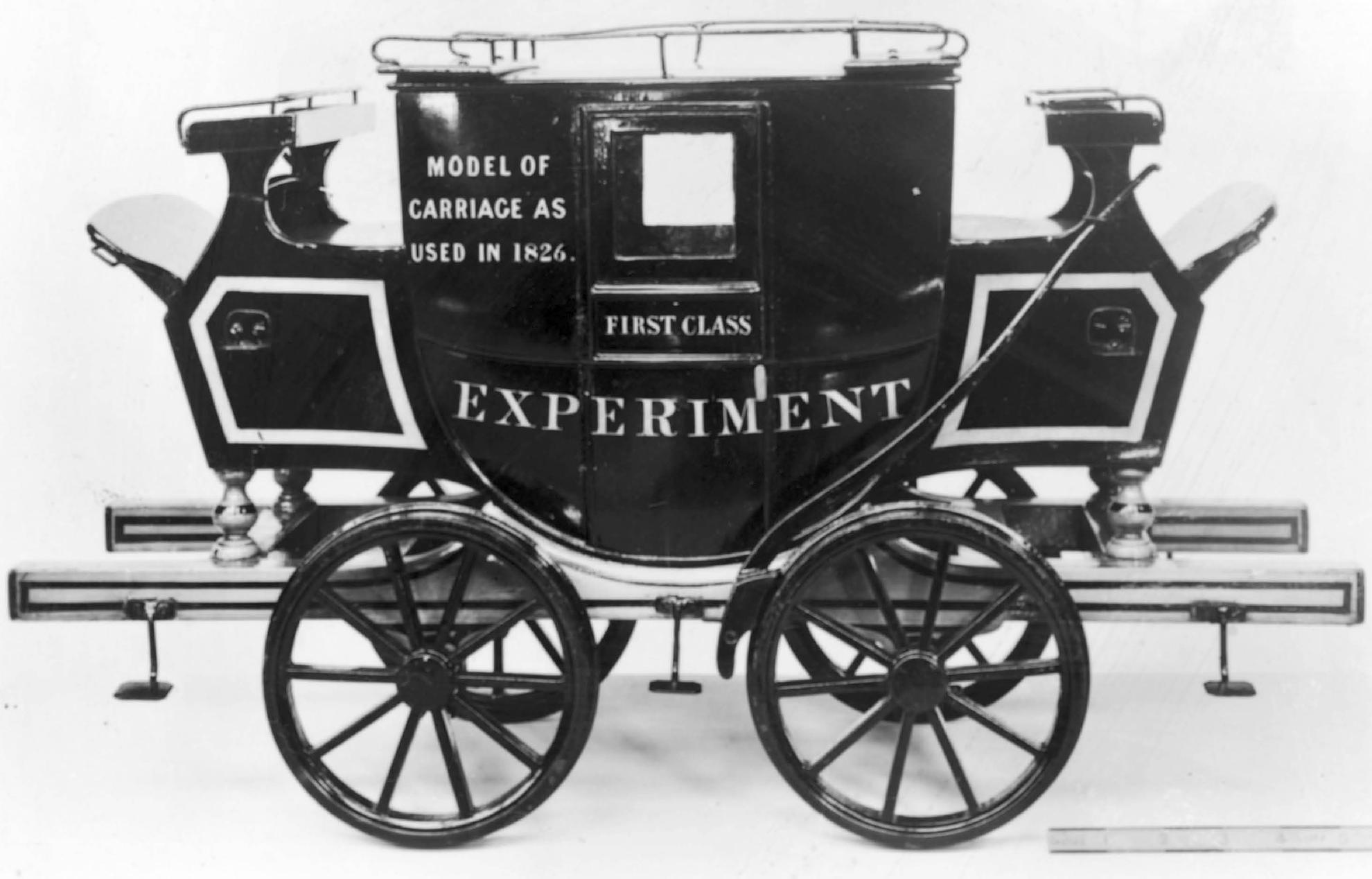
A model of the Experiment used to transport passengers on the Stockton & Darlington Railway.
The opening of the Liverpool & Manchester Railway, the worlds first proper passenger line, resulted in a more standard design of carriages being utilised, although not before some experimentation had taken place. Two early coaches, the Queen Adelaide and the Wellington, provided elements that were combined into a form subsequently built and used by many railways for more than two decades. The Queen Adelaide had a central closed compartment with two others on either side that were open to the elements above waist height, mounted on a conventional rail underframe. The second vehicle, the Wellington, had three closed compartments but the carriage body was mounted betw een the wheels.
Contemporary prints show other strange designs, but it was an amalgamation of the two coaches described that resulted in the standard three-compartment first-class carriage used on the Liverpool & Manchester and many railways that followed. The new carriages had features that would have been familiar to passengers used to travelling by stagecoach: there were three compartments, each with upholstered seats. On the roof was a box seat for the guard, with rails provided for the safe storage of passengers luggage. Carriages carried a livery of yellow and black, chosen by George Stephenson; replicas of these 1834 carriages in the collection of the National Railway Museum carry this col our scheme too.

